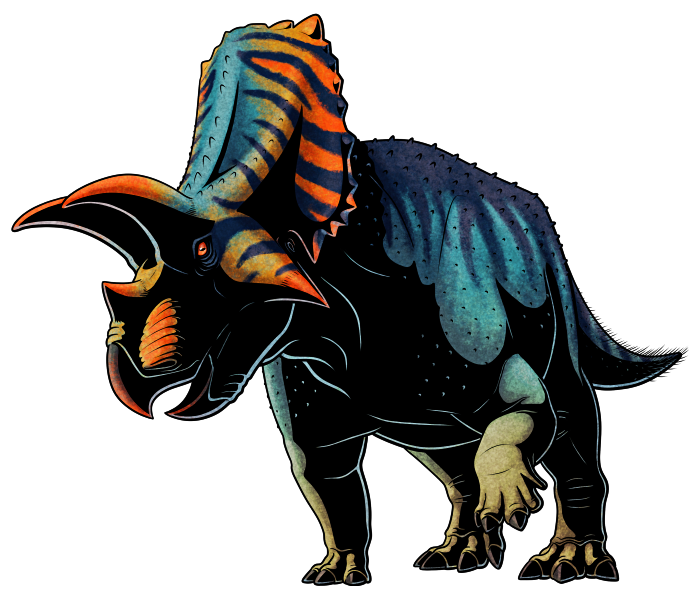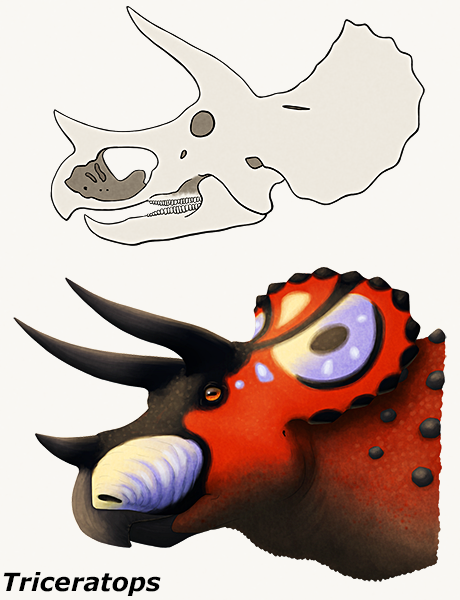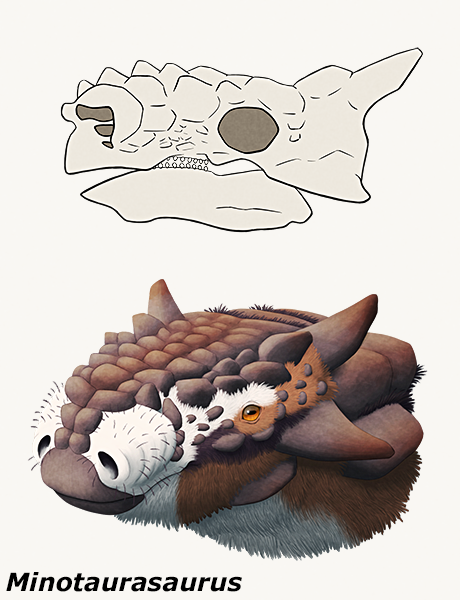In the late 1990s a partial skeleton of a ceratopsian was discovered in New Mexico, USA. These remains were initially thought to belong to Torosaurus, but after more of the specimen was recovered in the mid-2010s it became clear the bones actually represented an entirely new species of horned dinosaur – officially named in 2022 as Sierraceratops turneri.
Sierraceratops lived during the Late Cretaceous, around 72 million years ago, in what at the time was the southern region of the island continent of Laramidia. About 4.6m long (~15′), it had fairly short chunky brow horns, long pointed cheek horns, and a relatively large frill.
It was part of a unique lineage of ceratopsians that were endemic to southern Laramidia, with its closest known relatives being Bravoceratops from western Texas and Coahuilaceratops from northern Mexico.



